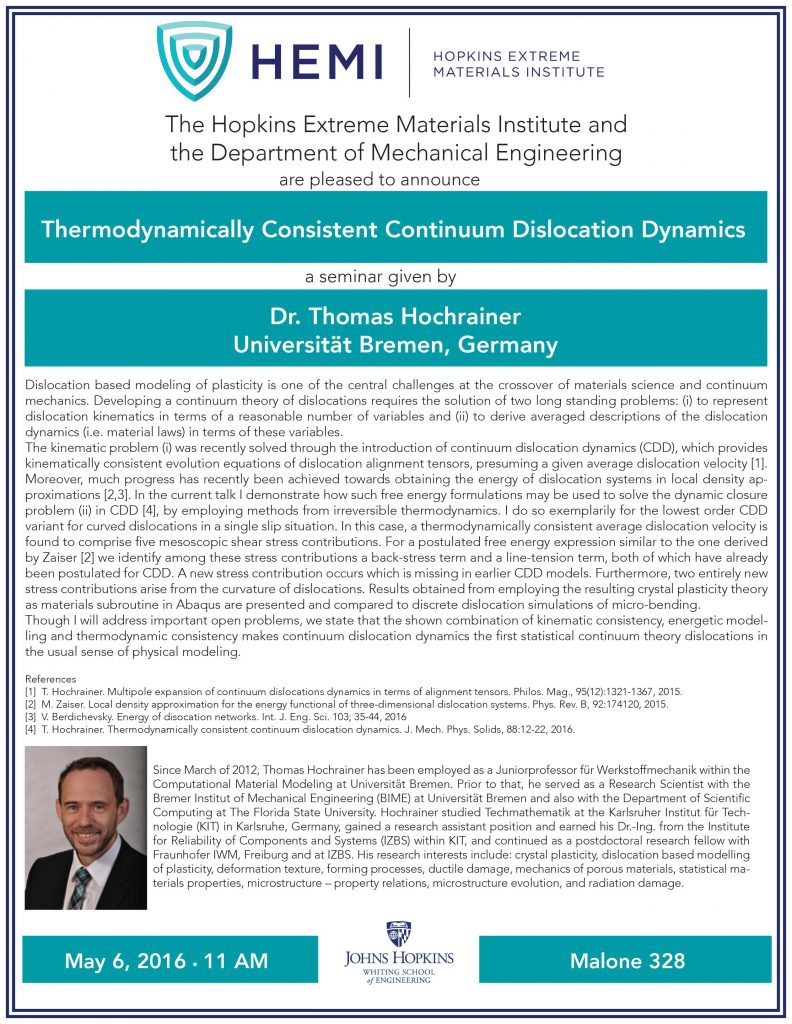May 6, 2016 @ 11:00 am - 12:00 pm
Event Navigation
Thermodynamically Consistent Continuum Dislocation Dynamics
Dislocation based modeling of plasticity is one of the central challenges at the crossover of materials science and continuum mechanics. Developing a continuum theory of dislocations requires the solution of two long standing problems: (i) to represent dislocation kinematics in terms of a reasonable number of variables and (ii) to derive averaged descriptions of the dislocation dynamics (i.e. material laws) in terms of these variables.
The kinematic problem (i) was recently solved through the introduction of continuum dislocation dynamics (CDD), which provides kinematically consistent evolution equations of dislocation alignment tensors, presuming a given average dislocation velocity [1]. Moreover, much progress has recently been achieved towards obtaining the energy of dislocation systems in local density approximations [2,3]. In the current talk I demonstrate how such free energy formulations may be used to solve the dynamic closure problem (ii) in CDD [4], by employing methods from irreversible thermodynamics. I do so exemplarily for the lowest order CDD variant for curved dislocations in a single slip situation. In this case, a thermodynamically consistent average dislocation velocity is found to comprise five mesoscopic shear stress contributions. For a postulated free energy expression similar to the one derived by Zaiser [2] we identify among these stress contributions a back-stress term and a line-tension term, both of which have already been postulated for CDD. A new stress contribution occurs which is missing in earlier CDD models. Furthermore, two entirely new stress contributions arise from the curvature of dislocations. Results obtained from employing the resulting crystal plasticity theory as materials subroutine in Abaqus are presented and compared to discrete dislocation simulations of micro-bending.
Though I will address important open problems, we state that the shown combination of kinematic consistency, energetic modelling and thermodynamic consistency makes continuum dislocation dynamics the first statistical continuum theory dislocations in the usual sense of physical modeling.
References
[1] T. Hochrainer. Multipole expansion of continuum dislocations dynamics in terms of alignment tensors. Philos. Mag., 95(12):1321-1367, 2015.
[2] M. Zaiser. Local density approximation for the energy functional of three-dimensional dislocation systems. Phys. Rev. B, 92:174120, 2015.
[3] V. Berdichevsky. Energy of disocation networks. Int. J. Eng. Sci. 103; 35-44, 2016
[4] T. Hochrainer. Thermodynamically consistent continuum dislocation dynamics. J. Mech. Phys. Solids, 88:12-22, 2016.
Seminar will be held at 11 AM in Malone 328.




